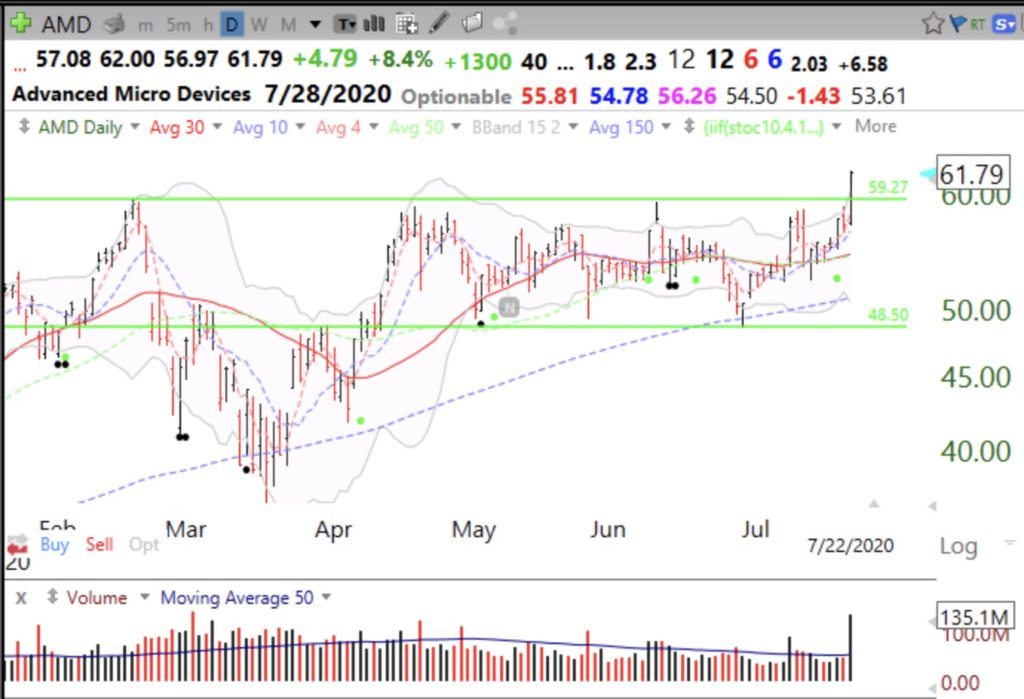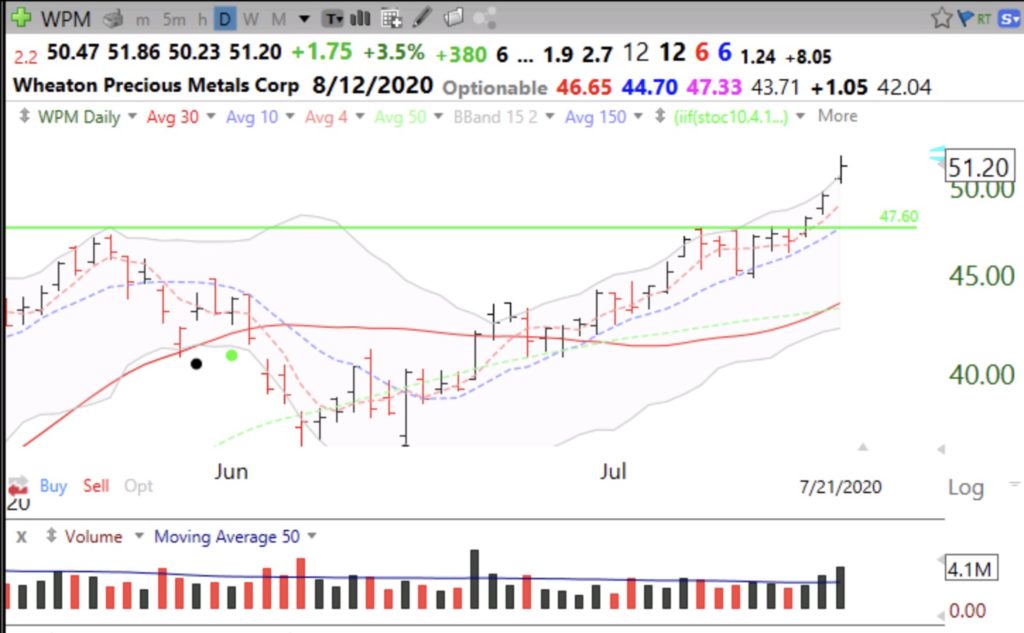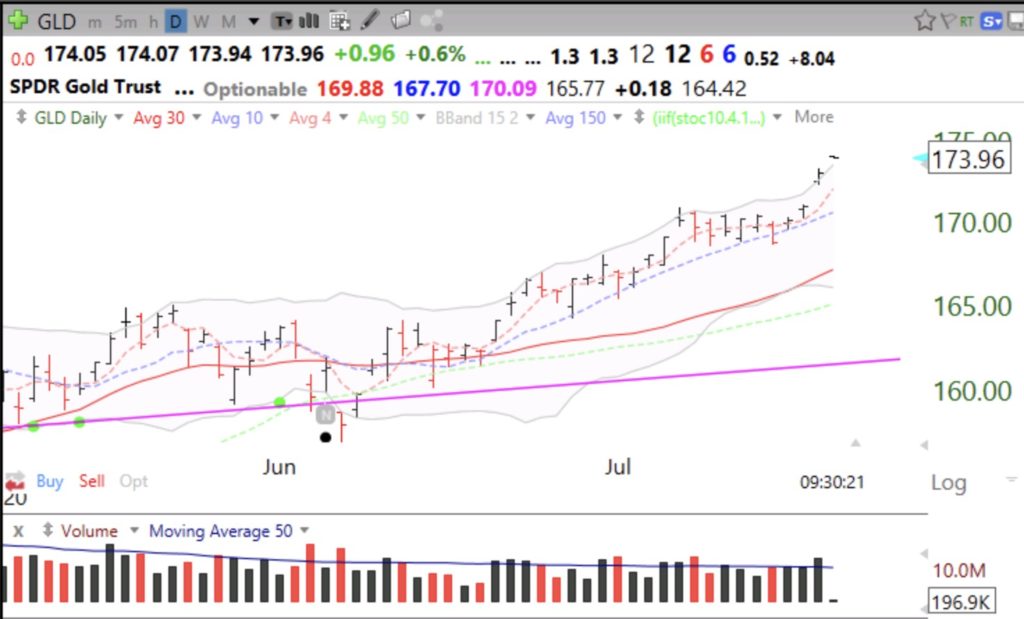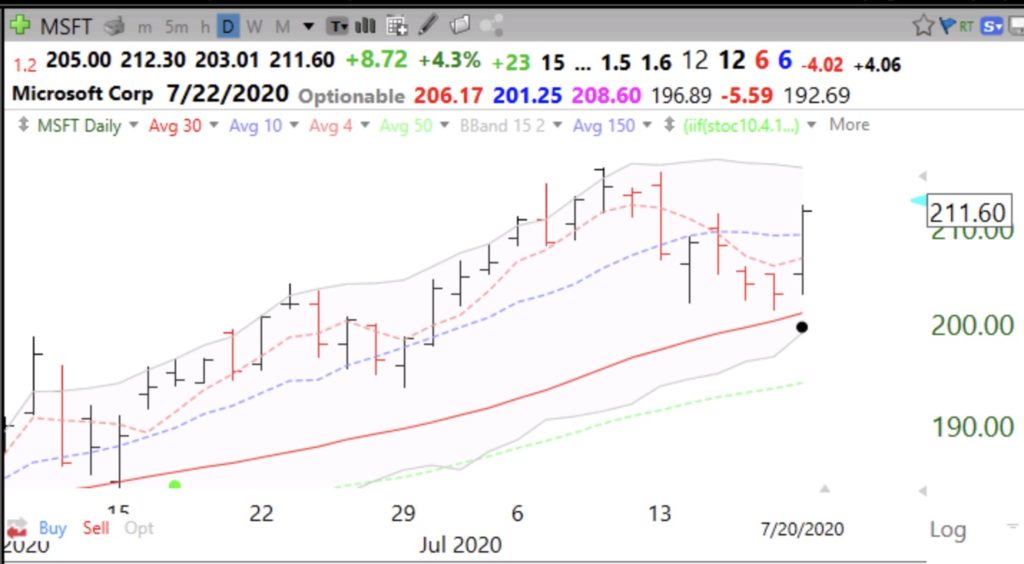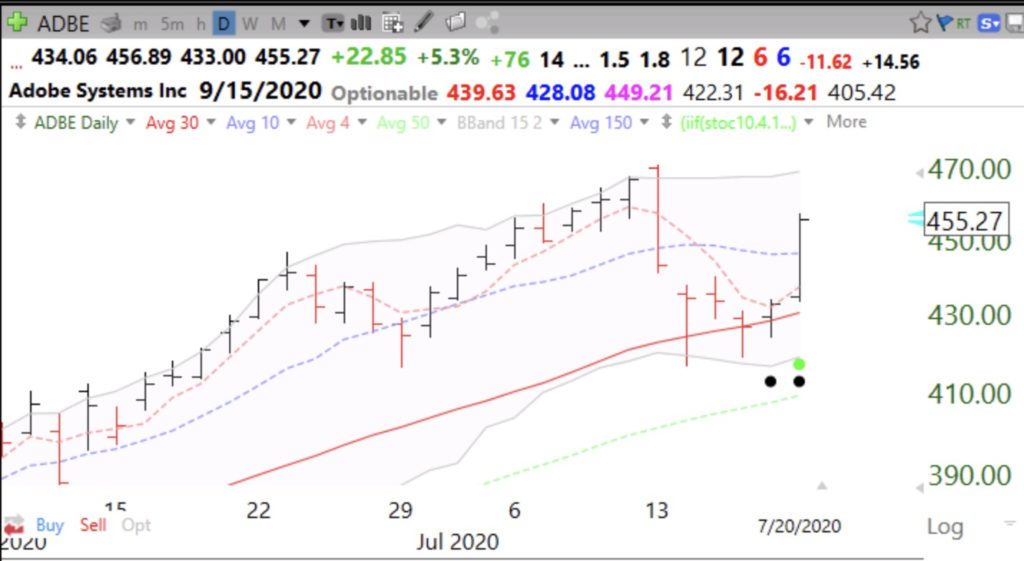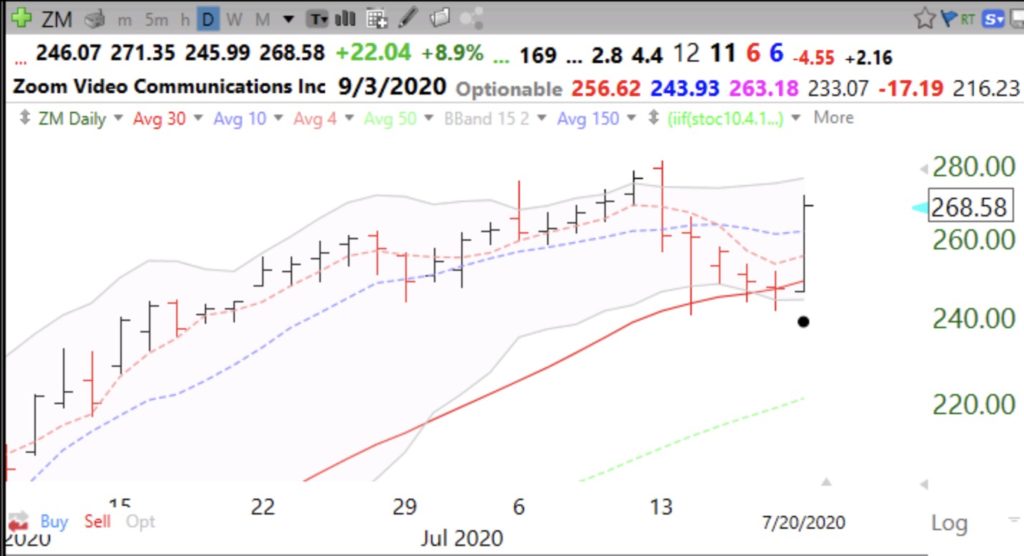In the near future I will show you how to create a GLB alert in TC2000. You might want to get the Gold software option for TC2000 to be ready. You may use the coupon tab on my blog to get a discount and start reviewing the tc2000.com tutorials. TC2000 sent me a text yesterday immediately when AMD crossed the green line. I had created the alert on June 19. Note the nice volume of trading yesterday on the break-out to an ATH.
Blog post: Follow my tweets @wishingwealth to get intraday alerts. $WPM $GLD rising
I have many alerts set in TC2000 to tell me when a stock trades at a particular price or breaks out. I often tweet out the alert intraday. You may follow my tweets @wishingwealth but understand that these tweets are not recommendations and could reflect varying technical signs. One should review the stock and its pattern to determine if it makes sense to you and meets your level of risk. I do not tweet when a break out fails but expect that all buyers would have put in a physical or mental stop loss GTC immediately after buying to protect themselves and control risk.
A few days ago I tweeted about WPM, a Canadian mining company, having a GLB, but I noted it lacked above average volume on the break-out. That did not seem to matter. The volume came in the next 2 days. Something is going on with precious metals and GLD, which is also rising. Rising gold often is an ominous sign.
Blog post; An incredible day for oversold growth stocks bouncing up off of support! $MSFT $ADOBE $ZM and many others
Last post I described the strategy of buying growth stocks that become over-sold and then turn up. Little did I know that the strategy would work so well on Monday. Look at MSFT ADBE and ZM below. I knew these stocks had been strong and I was waiting for them to become short term over-sold and then start rising. That was the safest time for me to get on board because I could then put in a close stop loss order if any failed. Many other stocks showed the same pattern on Monday. Check out the ones I mentioned in the prior post. Perhaps it had something to do with the strong performance of the QQQ?! (The black dot shows a short term oversold stock that is turning up.)
